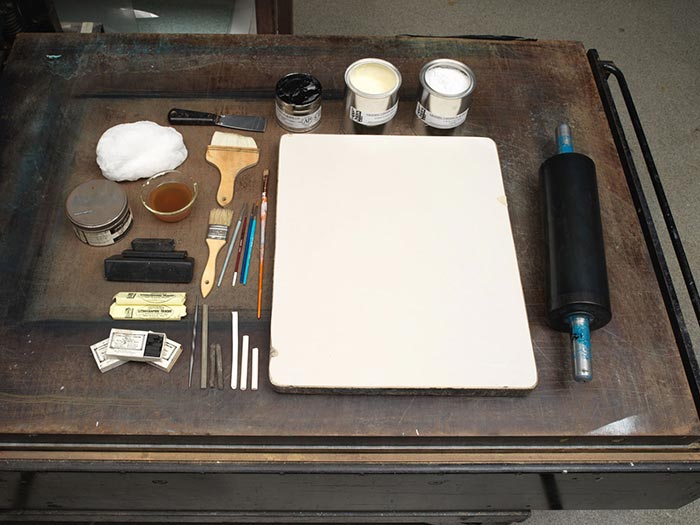A Short Stop at a Way Station: The Polite Conductor
Thomas B. Worth American
Publisher Currier & Ives American
Not on view
This print depicts a railroad station with a train conductor (to right of center)-- who sports a mustache and wears a blue uniform and hat-- bowing slightly as he extends his right hand to hold the right hand of a pretty young woman (center), thereby helping her to board a train car. The woman wears a green plaid dress with a dark red hem and sleeves; flowers adorn her bonnet. At left, an old woman ---wearing spectacles, a dark dress and a tiered hat --stands holding a leash attached to her small black dog; at the lower left, her small brown bag and a closed black umbrella lay on the ground Between the old woman and the young woman, a man trips on the dog's leash, thereby causing the dog to stand upright choking. As the man starts to fall forward, his umbrella falls between his legs and his pince-nez spectacles fly off behind him, while his arms grab the young woman's waist. The man wears a bowler hat, a gold-tan jacket, and light blue pants; he has a red blanket (with a green and yellow stripes adorning each end) draped over his right shoulder. Watching the boarding passengers through the train car window is an elegant gentleman (shown in a bust-length view) with a mustache and goatee; he wears a black top hat. At the lower right, a railroad worker, who holds a mallet in his right hand, laughs at the tripping man, whose foot is still tangled in the dog's leash. The worker wears a pink vest, gray pants, and a hat with a turned-up brim. The title is imprinted in the bottom margin.
Nathaniel Currier, whose successful New York-based lithography firm began in 1835, produced thousands of prints in various sizes that together create a vivid panorama of mid-to-late nineteenth century American life and its history. People eagerly acquired such lithographs featuring picturesque scenery, rural and city views, ships, railroads, portraits, hunting and fishing scenes, domestic life and numerous other subjects, as an inexpensive way to decorate their homes or business establishments. As the firm expanded, Nathaniel included his younger brother Charles in the business. In 1857, James Merritt Ives (the firm's accountant since 1852 and Charles's brother-in-law) was made a business partner; subsequently renamed Currier & Ives, the firm continued until 1907.
The late nineteenth-century Darktown prints by Currier & Ives depict racist stereotypes that are offensive and disturbing.The Metropolitan Museum of Art preserves such works to shed light on their historical context and to enable the study and evaluation of racism.
In this print, a caricatured, wide-eyed Black (African American) man has wrapped his arms and legs around the smokestack of a train engine (the locomotive --in a cropped side view--heads from right to left). A large bicycle wheel loops around the man's legs-- evidence that he had been riding a high-wheeled bicycle and collided into the train. The ttle and caption --imprinted in bottom margin-- imply that the accident has knocked the man's head so severely that instead of "seeing stars," he says --in his crazy daze-- that he has "struck a comet."
Nathaniel Currier, whose successful New York-based lithography firm began in 1835, produced thousands of prints in various sizes that together create a vivid panorama of mid-to-late nineteenth century American life and its history. People eagerly acquired such lithographs featuring picturesque scenery, rural and city views, ships, railroads, portraits, hunting and fishing scenes, domestic life and numerous other subjects, as an inexpensive way to decorate their homes or business establishments. As the firm expanded, Nathaniel included his younger brother Charles in the business. In 1857, James Merritt Ives (the firm's accountant since 1852 and Charles's brother-in-law) was made a business partner; subsequently renamed Currier & Ives, the firm continued until 1907.

